
South African Journal of Geomatics
Scope & Guideline
Elevating the Discourse in Geographic Sciences
Introduction
Aims and Scopes
- Geospatial Data Analysis and Management:
This includes the use of Geographic Information Systems (GIS) and remote sensing technologies to analyze spatial data for urban planning, environmental monitoring, and resource management. - Remote Sensing Applications:
The journal emphasizes methodologies related to remote sensing, including satellite imagery analysis and aerial surveys, to monitor environmental changes, assess land use, and manage natural resources. - Geospatial Technologies in Governance:
Research often explores the role of geospatial technologies in enhancing governance, such as optimizing resource distribution, improving infrastructure, and supporting decision-making processes. - Innovative Mapping Techniques:
The journal showcases advancements in mapping techniques, including the use of machine learning and deep learning for image classification and analysis of complex spatial datasets. - Sustainability and Environmental Impact Studies:
Papers frequently focus on the environmental impacts of land use changes, resource extraction, and climate change, emphasizing sustainable practices and mitigation strategies. - Community and Socioeconomic Studies:
Research often involves assessing the socioeconomic factors influencing land use and urban development, including the role of communities in resource management.
Trending and Emerging
- Integration of AI and Machine Learning in Geomatics:
Recent publications have highlighted the application of artificial intelligence and machine learning techniques in processing and analyzing geospatial data, indicating a growing trend towards automation and enhanced analytical capabilities. - Use of UAVs and Drones for Data Collection:
The increasing utilization of unmanned aerial vehicles (UAVs) for mapping and monitoring purposes showcases a shift towards more efficient and cost-effective data collection methods. - Focus on Climate Change and Environmental Monitoring:
There is a rising interest in research that investigates the impacts of climate change on land use and natural resources, reflecting the urgent need for sustainable practices and effective environmental management. - Community-Based Participatory Research:
Emerging themes indicate a growing trend towards involving communities in geospatial research, highlighting the importance of local knowledge and engagement in addressing environmental and social issues. - Big Data in Geospatial Analysis:
The journal is increasingly publishing studies that leverage big data analytics for geospatial research, indicating a shift towards handling large datasets for improved decision-making and policy formulation.
Declining or Waning
- Conventional Surveying Techniques:
There seems to be a reduced emphasis on traditional surveying methods, as the focus shifts towards high-tech solutions like UAVs and GNSS, reflecting a broader trend of modernization in geomatics. - Literature Reviews and Theoretical Frameworks:
There is a noticeable decline in papers that focus solely on literature reviews or theoretical discussions, with a greater emphasis on empirical research and case studies that demonstrate practical applications. - Basic Geodetic Studies:
The journal has seen fewer studies dedicated to basic geodetic principles and practices, as it increasingly prioritizes applied research that addresses specific geographic or environmental challenges.
Similar Journals
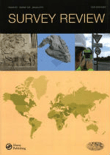
SURVEY REVIEW
Illuminating Complex Challenges in Civil and Structural EngineeringSURVEY REVIEW is a distinguished journal published by Taylor & Francis Ltd, focusing on a diverse range of disciplines including Civil and Structural Engineering, Computers in Earth Sciences, and Earth and Planetary Sciences. With an ISSN of 0039-6265 and an E-ISSN of 1752-2706, this journal has been a vital resource for scholarly communication since its inception in 1963. Positioned within the Q2 and Q3 quartile categories according to the latest rankings, it is recognized for its significant contributions to advancing knowledge in multiple fields, specifically holding a rank of 64/159 in Earth and Planetary Sciences and 32/73 in Computers in Earth Sciences. Researchers, professionals, and students benefit from its critical insights into complex engineering and scientific challenges. Although SURVEY REVIEW is not open access, it remains a highly cited journal, making it an essential avenue for disseminating pivotal findings that impact both academia and industry practices.
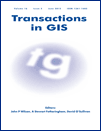
Transactions in GIS
Connecting Theory and Practice in GISTransactions in GIS is a premier academic journal published by WILEY, dedicated to advancing the field of Geographic Information Science (GIS). With an ISSN of 1361-1682 and an E-ISSN of 1467-9671, this journal has continually contributed valuable insights since its inception in 1996, transforming the landscape of GIS research and application. Covering a broad scope within Earth and Planetary Sciences, it holds a notable Q2 ranking and stands in the 74th percentile among its peers as per Scopus rankings. The journal serves as a critical platform for researchers, professionals, and students who seek to disseminate and engage with innovative GIS methodologies, applications, and theoretical advancements. With a commitment to quality and rigor, Transactions in GIS remains a vital resource for those at the forefront of geographic research and analysis.

Geoadria
Cultivating Innovative Perspectives on Earth SciencesGeoadria, an esteemed Open Access journal published by the University of Zadar in Croatia, has been at the forefront of disseminating valuable research since its inception in 1996. With a keen focus on atmospheric science, demography, earth-surface processes, and geography, this journal serves as a crucial platform for researchers and professionals aiming to explore the intricate relationships between these fields. Although it currently holds a Q4 quartile ranking in various categories, such as Atmospheric Science and Geography, its commitment to promoting innovative scholarly dialogue ensures its relevance and utility within the academic community. Geoadria is indexed in Scopus, with rankings that reflect its ongoing contribution to the social sciences and earth sciences, notably garnering attention in niche areas. With a dedication to open access since 1996, the journal stands as a testament to the University of Zadar's commitment to enhancing global knowledge. Researchers, professionals, and students interested in geography, demography, and environmental sciences will find Geoadria a vital resource for the latest empirical studies and theoretical discussions.

EARTH
Pioneering discoveries in Earth and Environmental Sciences.EARTH is a prestigious journal published by MDPI, located in Switzerland, with a commitment to advancing the fields of Earth and Planetary Sciences and Environmental Science. Launched in 2020, the journal emphasizes an open-access publication model, ensuring that high-quality research is widely accessible to the scientific community and beyond. As of 2023, it proudly holds a Q2 ranking in both the Environmental Science and Earth and Planetary Sciences categories, indicating its significant impact within these disciplines; it ranks #90 out of 219 and #70 out of 159 in their respective fields according to Scopus. With the convergence of multidisciplinary research and the critical challenges our planet faces, EARTH seeks to publish innovative studies that foster a deeper understanding of geological and environmental processes. Researchers, professionals, and students alike will find this journal an invaluable resource for the latest findings and discussions shaping our understanding of Earth sciences.
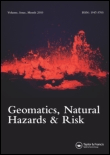
Geomatics Natural Hazards & Risk
Bridging Disciplines for Effective Risk AssessmentGeomatics Natural Hazards & Risk, published by TAYLOR & FRANCIS LTD, is a premier open-access journal that has been at the forefront of interdisciplinary research since 2010, addressing critical issues related to natural hazards and environmental risk management. With an impressive impact factor and ranking in the Q1 quartile in both Earth and Planetary Sciences and Environmental Science categories, this journal serves as a vital platform for researchers, professionals, and students dedicated to advancing knowledge in these fields. The journal's commitment to open access since 2016 ensures that its high-quality research is readily available to a global audience, fostering collaboration and innovation. Located in the United Kingdom, Geomatics Natural Hazards & Risk encompasses a broad scope of studies including geospatial technologies, risk assessment methodologies, and the societal impacts of natural disasters, making it an essential resource for anyone involved in the investigation and mitigation of natural hazards.

Journal of Geovisualization and Spatial Analysis
Illuminating Geographic Science Through Rigorous AnalysisJournal of Geovisualization and Spatial Analysis, published by SpringerNature, is an influential open-access journal specializing in the cutting-edge fields of geovisualization, spatial analysis, and their application in earth sciences and geography. Since its inception in 2017, this journal has established a prominent stance with a high impact factor and prestigious Q1 rankings across multiple categories, including Computers in Earth Sciences, Earth and Planetary Sciences (miscellaneous), and Geography, Planning and Development. The editorial board is committed to advancing innovative research and methodologies, providing a platform for scholars to disseminate their findings globally. With impressive Scopus rankings—placing it in the top percentiles among its peers—the journal serves as a vital resource for researchers, professionals, and students keen on understanding spatial data and its implications for geographic science. Its emphasis on rigorous peer review and rapid publication enhances accessibility to substantive research, thus fostering knowledge sharing within the scientific community. Based in Switzerland, the journal promotes a collaborative environment for interdisciplinary studies, making it an essential read for anyone involved in spatial analysis research.

Bulletin of Geography-Physical Geography Series
Exploring the dynamics of our planet's landscapes.The Bulletin of Geography-Physical Geography Series is a prominent open-access journal dedicated to advancing the field of physical geography. Published by Nicolaus Copernicus University in Poland, this journal has been a vital resource for researchers, professionals, and students alike since its inception in 2009. With an ISSN of 2080-7686 and an E-ISSN of 2300-8490, it contributes significantly to the academic discourse in geography, planning and development, and geophysics, boasting a 2023 Scopus rank of #385 in Social Sciences and #84 in Earth and Planetary Sciences. The journal aims to disseminate innovative research and critical insights that address contemporary challenges in physical geography, making it a valuable platform for those seeking to contribute to or stay informed about the latest developments in the field. With its commitment to quality and accessibility, the Bulletin of Geography-Physical Geography Series plays a crucial role in fostering scholarly exchange and collaboration globally.
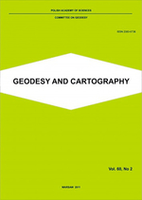
Geodesy and Cartography
Innovating Mapping Practices for Tomorrow's DiscoveriesGeodesy and Cartography, published by the Polska Akademia Nauk (Polish Academy of Sciences), is a premier open-access journal dedicated to advancing the fields of geodesy, cartography, and geographic information science. Since its inception in 2010, the journal has provided a vital platform for researchers, professionals, and students to share their findings, fostering innovation and collaboration in these critical areas of study. With its ISSN 2080-6736 and E-ISSN 2300-2581, the journal is accessible to a global audience, ensuring that cutting-edge research is readily available to enhance scientific understanding and application. The journal not only serves as a repository of knowledge but also aims to contribute to the development of best practices and methodologies within geospatial sciences, making it an essential resource for anyone invested in the ever-evolving landscape of mapping and spatial data analysis.
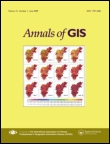
Annals of GIS
Innovating the Future of Geographic InformationWelcome to the Annals of GIS, a leading academic journal published by Taylor & Francis Ltd, dedicated to advancing the field of Geographic Information Science and its applications. With an ISSN of 1947-5683 and an E-ISSN of 1947-5691, this Open Access journal has been ensuring wide accessibility since 2019, thereby bolstering the dissemination of knowledge in areas such as remote sensing, spatial analysis, and geoinformatics. Hailing from the United Kingdom, the journal ranks impressively within its categories, achieving a Q2 status in Computer Science Applications and a prestigious Q1 ranking in Earth and Planetary Sciences for 2023, placing it in the top 10% among its peers. With a focus on innovative research spanning from 2009 to 2024, the Annals of GIS serves as a vital platform for researchers, professionals, and students alike, providing insights and fostering discussions that push the boundaries of geographic technologies and their real-world applications.
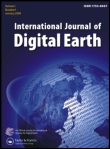
International Journal of Digital Earth
Connecting disciplines for a sustainable digital Earth.Welcome to the International Journal of Digital Earth, a premier open-access journal published by Taylor & Francis Ltd, dedicated to advancing the field of digital geoscience. With its ISSN 1753-8947 and E-ISSN 1753-8955, this journal has established itself as a vital resource for scholars and practitioners alike since its inception in 2008. The journal is at the forefront of interdisciplinary research, showcasing a diverse scope from Earth sciences to computer science applications, evidenced by its impressive ranking in the 2023 Scopus database. It holds a Q1 categorization in Earth and Planetary Sciences, with a percentile rank among the top 16% of its peers, and also stands out in the Q2 quartile for both Computer Science Applications and Software disciplines. The journal's commitment to open access, established in 2022, underscores its dedication to disseminating knowledge and fostering collaboration. By providing a platform for high-quality research, the International Journal of Digital Earth plays a critical role in addressing the complexities of our changing planet through innovative digital solutions. Whether you are an experienced researcher or a student, this journal is an essential addition to your academic toolkit.